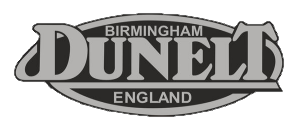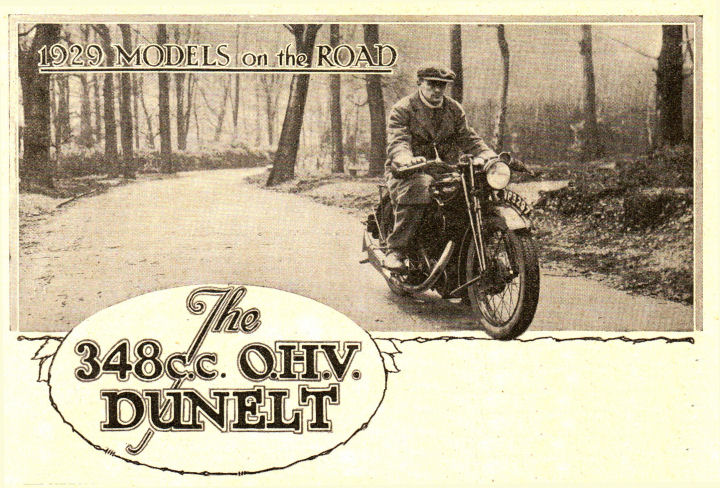



EVERYONE associates the name "Dunelt" with two-stroke engines; with machines which at one time were regarded as unconventional, but which, by their very consistent performance, have established themselves as models of real worth possessing outstanding features of design. Having attained considerable success in this field, the firm aroused unusual interest by introducing a conventional four-stroke, which made its first appearance at Olympia this year.
When a maker enters the 350 c.c. o.h.v, class for the first time he has many points to consider; for instance, this machine must have a performance second to none, and this must not be obtained at the expense of appearance.

The J4 Vulture is very similar to the machine discussed in this article.
Qualities that are Merely Hoped For.
One of the most difficult things to define is the term "good performance." It is a term that has, of late, become confused, and its true meaning has been distorted by allowing maximum speed to be the dominating factor. This is the chief quality which one expects to find in a machine in this class; other things, such as refinement, are merely hoped for.
The machine handed over to The Motor Cycle for test was standard in every respect, with the exception of the exhaust pipes—which are now of a better shape and give greater ground clearance—and twist-grip control for the throttle. Mudguards on machines issued to the public will be of deeper section than those seen at the Show, to provide better protection and more clearance for the tyres. These, obviously, are points of less importance than the behaviour of the model on the road, but, nevertheless, the standard equipment tends to enhance the performance of the new four-stroke Dunelt rather than to detract from it. A little less than 1,000 miles had been covered by the machine prior to this test, and the engine had just been decarbonised, so it will be seen that its condition was favourable, and it is reasonable to suppose that the machine was giving of its best.
At the outset one of the most noticeable features was the mechanical quietness of the Sturmey-Archer engine. A certain amount of clatter generally emanates from push-rod-operated valve gear, but was most agreeably absent from the Dunelt. This is the case not only at low engine speeds, but throughout the entire throttle range. At road speeds between 25 and 30 m.p.h, a piston rattle made itself evident, but disappeared entirely either above or below this, speed, and since the normal cruising rate is appreciably higher than this, the noise has no chance of becoming an annoyance.
On Slippery City Roads.
To set off from the city of Birmingham when the roads are greasy is calculated to be a most unpleasant proceeding, and the steadiness of the Dunelt was quickly apparent and much appreciated. This model is not light in weight, and, while heaviness may in some respects be a drawback, it is a quality which certainly assists in road-holding, always provided, of course, that the weight is properly distributed.
This would appear to be the case in the present instance, for the sense of balance was never disturbed, and no particular concentration was required in awkward situations on treacherous road surfaces.
Source: The Motor Cycle